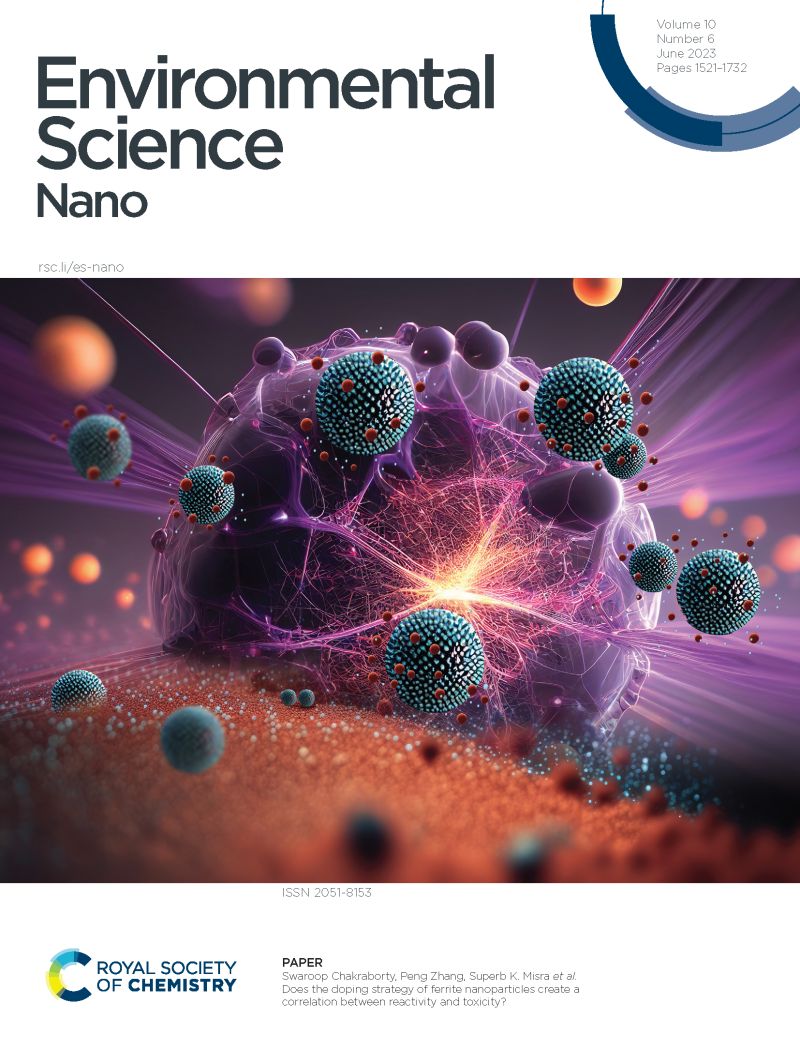Carboxy-Like Structure Determines Radical Scavenging Activity of Carbon Dots for Rice Resistance to Salt Stress
IF 5.1
2区 环境科学与生态学
Q1 CHEMISTRY, MULTIDISCIPLINARY
引用次数: 0
Abstract
Carbon dots (CDs) have an advancement in scavenging radicals. However, the potential struc-ture-function relationship is still unclear. Here, four kinds of CDs rich in carboxyl (CDs-c), hy-droxyl (CDs-h), and different contents of amino structures (CDs-a_0.2, CDs-a_2), respectively, were prepared by regulating the raw reagent using microwave assisted method. In vitro assays indicated that CDs-c had the highest scavenging activities against KMnO4, DPPH, ·OH, and O2- radicals. The changes in the morphology and chemical structure of these CDs after the reaction with ·OH suggested that the carboxy-like structures play significant roles in radical scavenging and antioxidant activity. Additionally, the calculation of reaction energy barriers using Density Functional Theory (DFT) revealed that the interaction between the carboxyl group and free radi-cals occurred in a barrier-free manner, resulting in the highest radical scavenging activity. In subsequent hydroponic experiments, rice seedlings pretreated with CDs-c showed the highest activity in their antioxidant defense system (SOD: 13.13%; POD: 40.55%; CAT: 133.33%; flavo-noid: 6.93%) and a significant enhancement in resistance to salt stress (fresh weight: 14.16%; height: 26.90%; chlorophyll content: 12.74%). This study uncovered the key active structures and mechanisms of CDs to scavenge oxidative radicals for plant antioxidant capacity under stress conditions and contributed to the management of environmental challenges faced by agriculture.碳点的类羧基结构决定了其清除自由基的能力
碳点在清除自由基方面具有一定的优越性。然而,潜在的结构-功能关系仍不清楚。本文采用微波辅助法制备了4种富含羧基(CDs-c)、羟基(CDs-h)和不同氨基结构(CDs-a_0.2、CDs-a_2)的CDs。体外实验表明,cd -c对KMnO4、DPPH、·OH和O2-自由基的清除活性最高。与·OH反应后CDs的形态和化学结构的变化表明其类羧基结构具有清除自由基和抗氧化活性的重要作用。此外,利用密度泛函理论(DFT)计算反应能垒表明,羧基与自由基之间的相互作用是无障碍的,因此清除自由基的活性最高。在随后的水培试验中,经cd -c预处理的水稻幼苗抗氧化防御系统活性最高(SOD: 13.13%, POD: 40.55%, CAT: 133.33%,类黄酮:6.93%),抗盐胁迫能力显著增强(鲜重:14.16%,高:26.90%,叶绿素含量:12.74%)。本研究揭示了CDs在逆境条件下清除氧化自由基的关键活性结构和机制,为农业面临的环境挑战的管理做出了贡献。
本文章由计算机程序翻译,如有差异,请以英文原文为准。
求助全文
约1分钟内获得全文
求助全文
来源期刊

Environmental Science: Nano
CHEMISTRY, MULTIDISCIPLINARY-ENVIRONMENTAL SCIENCES
CiteScore
12.20
自引率
5.50%
发文量
290
审稿时长
2.1 months
期刊介绍:
Environmental Science: Nano serves as a comprehensive and high-impact peer-reviewed source of information on the design and demonstration of engineered nanomaterials for environment-based applications. It also covers the interactions between engineered, natural, and incidental nanomaterials with biological and environmental systems. This scope includes, but is not limited to, the following topic areas:
Novel nanomaterial-based applications for water, air, soil, food, and energy sustainability
Nanomaterial interactions with biological systems and nanotoxicology
Environmental fate, reactivity, and transformations of nanoscale materials
Nanoscale processes in the environment
Sustainable nanotechnology including rational nanomaterial design, life cycle assessment, risk/benefit analysis
 求助内容:
求助内容: 应助结果提醒方式:
应助结果提醒方式:


